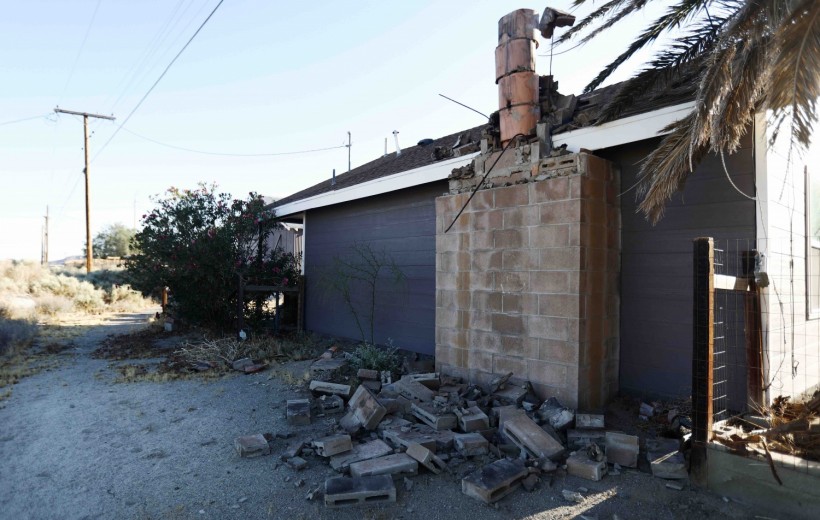On August 9 at 8:07 a.m., North Carolina had one of its most powerful earthquakes. At 5.1 magnitude, the earthquake comes just days after Hurricane Isaias.
The epicenter occurred along the Virginia-North Carolina border. The U.S. Geological Survey said that most of the nearby structures 'are resistant to earthquake shaking, though vulnerable structures exist.'

South Carolina, Virginia, and Tennessee all experience the quake too. No persons were reported injured but there were damages to some homes, buildings, and roads in Sparta, NC, about 2.5 miles northwest of the epicenter.
People on social media posted pictures of groceries in a complete mess, broken televisions, cracked roads, and damages walls. Locals also posted videos of how powerful the side to side shaking had been.
Karen Backer had initially thought her roommate was just banging the cabinet doors in the kitchen, but soon realized it was an earthquake. She said, 'Well, sadly, nothing surprises me in 2020, but a hurricane and an earthquake in the same week is crazy.'
EARTHQUAKE VIDEO: This is what it looked like earlier this morning near the epicenter of a 5.1 magnitude earthquake in Sparta, North Carolina. https://t.co/cdDzbOMN1r
Tom Willis pic.twitter.com/0XhJ8xHtjc — WMBF News (@wmbfnews) August 9, 2020
History of Powerful Earthquakes
The state experienced another earthquake of similar magnitude in 2011, which also occurred in August. The recent incident had been the largest quake since one of 5.8 magnitude hit in 2011.
It was 'the biggest earthquake Virginia has ever felt since Columbus' time,' according to Dr. Ken Taylor, a state geologist in NC. Although Virginia was the epicenter, it was strong enough to leave damage in North Carolina and Washington, D.C.
Throughout the history of North Carolina, earthquakes causing damage had been rare, with only about 22 powerful quakes since 1735. In 1916, a 5.5 magnitude quake near Skyland, NC had chimneys destroyed and cracked window panes. The quake was even felt in six surrounding states.
One of the largest quakes was on August 31, 1886, in Charleston, South Carolina. With a magnitude of 7.3, the earthquake 'was felt throughout the state [North Carolina], toppling numerous chimneys and cracking walls but causing no deaths or injuries,' according to historians. In Charleston, about 60 people were killed by the impact.
Read Also: Large Earthquakes Found to Follow The Mathematical Pattern Called 'Devil's Staircase'
'Explosive Shocks'
Perhaps one of the more vivid accounts was an occurrence in 1874, which gave the Rumbling Bald Mountain Resort its name. According to the resort, on February 9, a local preacher sought after a revival by 'making the mountain to shake and tremble beneath their feet.'
A series of about 75 earthquakes occurred the next day until April 17, which the USGS referred to as 'explosive shocks.' The tremors and sounds had caused locals to think that it might have been the end of the world as the 'earthquake-like sounds and trembling created a time of terror.'
Alleghany County declared a state of emergency by the afternoon of the recent earthquake as smaller quakes followed. According to the U.S. Geological Survey, there may be several aftershocks for the next few days with a 45% chance of earthquakes measuring at magnitude 3 or above.














